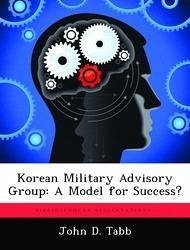The United States Army is deeply involved in advisory missions in Iraq and Afghanistan, efforts that have met with mixed success. As the Army searches for new and innovative approaches to the problems of advising indigenous forces, it may be useful to look to the past for models of success. The Korean Military Advisory Group (KMAG) was among the first large-scale advisory missions in US Army history. It conducted its mission during war and peace from its beginning in 1949, through the end of the Korean War in 1953 and beyond. This monograph asserts that KMAG was successful in building the Army of the Republic of Korea (ROKA) into a force capable of enforcing the government's control of territory and population while also deterring external threats. A case study methodology, utilizing the US Army's DOTMLPF problem-solving construct, will test this assertion. The first section will place the KMAG mission within the context of the conditions that existed following the liberation of Korea in 1945 and leading up to the beginning of the war in 1950. The second section, containing the case study, will analyze the specific measures taken by KMAG during the Korean War to turn the ROKA into an effective fighting force. The intent of this research is not to make specific recommendations for the advisory mission in Afghanistan but, rather, to point out the actions taken by KMAG which led to the success of their mission. Direct parallels between this case and that of Afghanistan are topics of further research.
Hinweis: Dieser Artikel kann nur an eine deutsche Lieferadresse ausgeliefert werden.
Hinweis: Dieser Artikel kann nur an eine deutsche Lieferadresse ausgeliefert werden.








